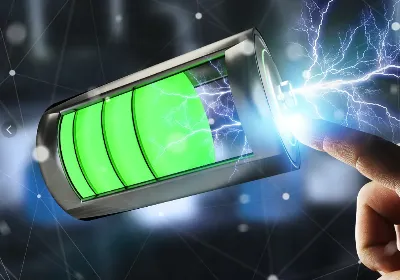An Article to Understand the BMS Battery Management System
An Article to Understand the BMS Battery Management System
The battery management system, English is BMS (Battery Management System), is an important part of the electric vehicle power battery system. It can detect, collect and preliminarily calculate the real-time state parameters of the battery, and at the same time control the on-off of the power supply circuit according to the comparison between the detected value and the allowable value; in addition, it will also feed back the collected key data to the vehicle controller, and receive the controller instructions to work in coordination with other systems on the car. Different cell types generally have different requirements for the management system. Lithium-ion batteries used in electric vehicles have large capacity, many series and parallel cells, complex systems, high performance requirements such as safety, durability, and power, and are difficult to implement. Therefore, it has become a bottleneck affecting the popularization of electric vehicles. The safe working area of lithium-ion batteries is limited by the window of temperature and voltage. When the range of the window is exceeded, the performance of the battery will decay rapidly, and even cause safety problems.
The main purpose of the battery management system is to ensure the design performance of the battery system, and provide functions from three aspects: safety, durability, and power. In terms of safety, that is, the BMS management system can protect battery cells or battery packs from damage and prevent safety accidents. In terms of durability, even if the battery works in a reliable safe area, the service life of the battery is extended. In terms of power, it is necessary to maintain the working state of the battery to meet the requirements of the vehicle.

The BMS management system is mainly composed of various sensors, actuators, controllers and signal lines. In order to enable new energy vehicles to drive safely on the road and comply with relevant standards and specifications, the BMS management system should have the following functions:
Battery parameter detection: including total voltage, total current, single battery voltage detection (to prevent overcharging, overdischarging and even polarity reversal), temperature detection (it is best to have a temperature sensor for each string of batteries, key cable connectors, etc.), smoke Detection (monitoring electrolyte leakage, etc.), insulation detection (monitoring leakage), collision detection, etc.
Battery state estimation: including state of charge (SOC) or depth of discharge (DOD), state of health (SOH), state of function (SOF), state of energy (SOE), failure and safety state (SOS), etc.
Online fault diagnosis: including fault detection, fault type judgment, fault location, fault information output, etc. Fault detection refers to the use of diagnostic algorithms to diagnose fault types and early warning through the collected sensor signals. Battery failures refer to sensor failures, actuator failures (such as contactors, fans, pumps, heaters, etc.), network failures, and various controller software and hardware failures Wait. The failure of the battery pack itself refers to overvoltage (overcharge), undervoltage (overdischarge), overcurrent, ultra-high temperature, internal short circuit fault, loose joint, electrolyte leakage, and insulation reduction.
Battery safety control and alarm: including thermal system control and high voltage safety control. After the BMS diagnoses a fault, it notifies the vehicle controller through the network and requires the vehicle controller to effectively deal with it (the BMS can also cut off the main circuit power supply when a certain threshold is exceeded) to prevent high temperature, low temperature, overcharge, overdischarge, and overheating. Damage to the battery and personal life such as current flow and leakage.
Charging control: There is a charging management module in the BMS, which can control the charger to charge the battery safely according to the characteristics of the battery, the temperature and the power level of the charger.
Battery balancing: the existence of inconsistency makes the capacity of the battery pack smaller than the capacity of the smallest cell in the pack. Battery equalization is to use active or passive, dissipative or non-dissipative equalization methods based on the information of the single battery to make the capacity of the battery pack as close as possible to the capacity of the smallest single cell.
Thermal management: According to the temperature distribution information in the battery pack and the charging and discharging requirements, determine the intensity of active heating/radiation, so that the battery can work at the most suitable temperature as much as possible, and give full play to the performance of the battery.
Network communication: BMS needs to communicate with network nodes such as the vehicle controller; at the same time, it is inconvenient to disassemble the BMS on the vehicle, and it is necessary to perform online calibration, monitoring, automatic code generation and online program download (program update and Do not disassemble the product), etc., the general vehicle network adopts CAN bus technology.
Information storage: used to store key data, such as SOC, SOH, SOF, SOE, cumulative charge and discharge Ah, fault codes and consistency, etc. A real BMS in a vehicle may only have some of the hardware and software mentioned above. Each battery cell should have at least one battery voltage sensor and one temperature sensor. For battery systems with dozens of cells, there may be only one BMS controller, or even BMS functionality integrated into the vehicle’s main controller. For battery systems with hundreds of cells, there may be a master controller and multiple slave controllers that manage only one battery module. For each battery module with dozens of battery cells, there may be some module circuit contactors and balancing modules, and the slave controller manages the battery modules like measuring voltage and current, controls the contactors, balances the battery cells and communicates with the master controller communication. Based on the reported data, the main controller will perform battery state estimation, fault diagnosis, thermal management, etc.
Electromagnetic Compatibility: Due to the harsh environment of electric vehicles, BMS is required to have good anti-electromagnetic interference capability, and at the same time, BMS is required to have low external radiation.
As the monitoring and management center of the new energy vehicle power battery pack, the BMS management system must carry out real-time dynamic monitoring of the temperature, voltage, charge and discharge current and other related parameters of the battery pack, and can take the initiative to take emergency measures to protect each single battery when necessary. Avoid safety problems such as overcharge, overdischarge, overheating and short circuit of the battery pack. In addition, the BMS management system must also accurately estimate the SOC of the battery during the entire service life of the battery pack, and feed back key information such as remaining power, mileage, and abnormal faults to the driver in a timely manner in an appropriate manner. An appropriate way to complete the data exchange function between the system and the vehicle ECU or host computer.






